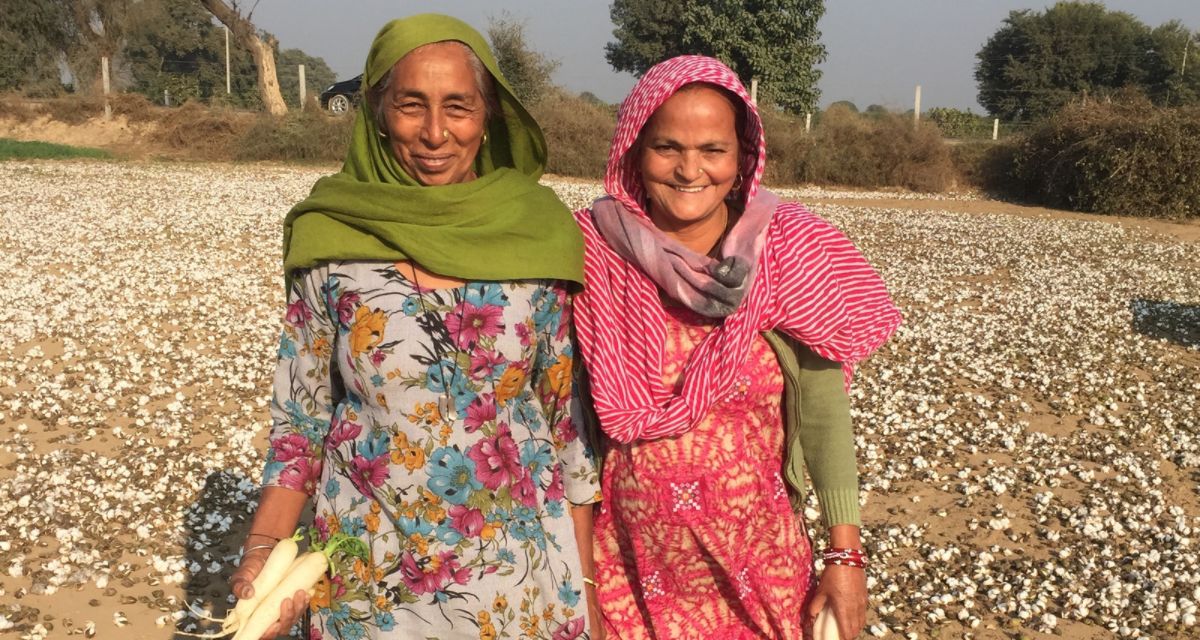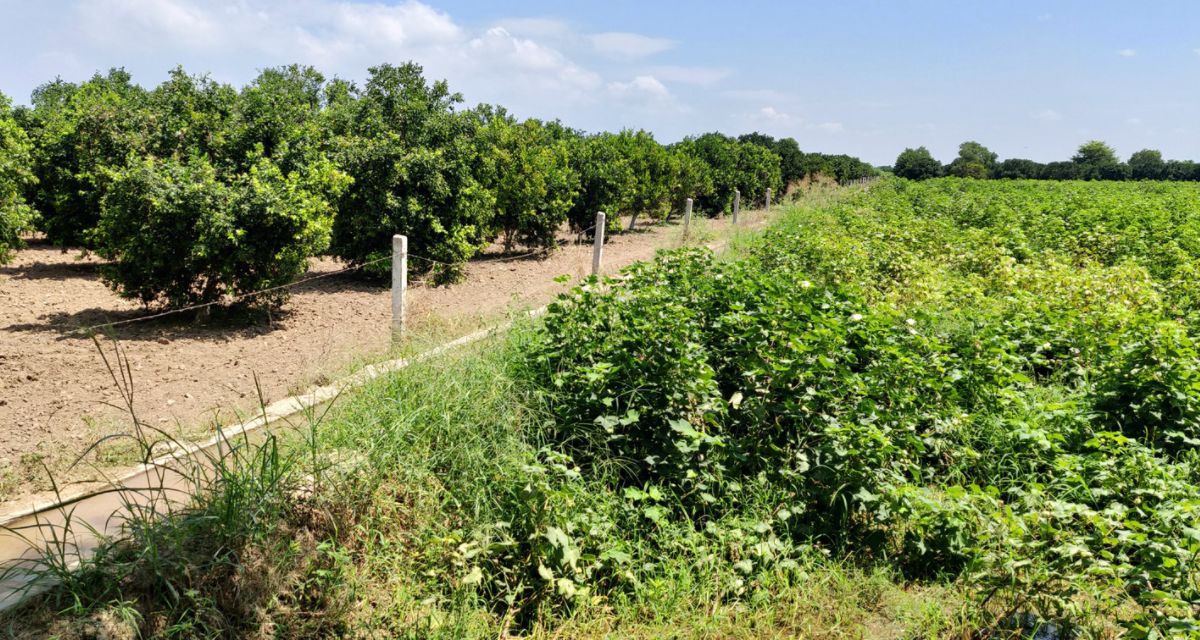At the end of the 15th century, long before our country’s environmental laws were formalised, Guru Jambeshwar, 34, from Nagaur in present-day Rajasthan, laid down the 29 principles of a new sect, which he founded, Bishnoism. Eight of these were focused on protecting the region’s wildlife and its dense green cover. Since then, Bishnoi society has been at the forefront of preserving the environment fiercely.
Bishnoi is an environmentalist by tradition. They bury their dead instead of cremating them to prohibit unnecessary felling of trees. Furthermore, they only use dead trees to feed their stoves and make furniture. With a 500-year-old heritage, this vegetarian sect with an estimated population of around one million is concentrated in the present-day states of western Rajasthan, Punjab, Haryana and Madhya Pradesh.
In Bajidpur Bhoma, a village in Punjab bordering Rajasthan, the Bishnoi community is strongly associated with their enduring indigenous cultures. Here, their eco-friendly social practices continue for six generations. This formerly dry land is now home to about 3,500 people, who together have made their land green and plentiful.
Majority of the Bishnoi community are engaged in the local economy, working as agriculturists. While Punjab’s water-hungry farming practices initiated by the Green Revolution have exacerbated the groundwater crisis across the state, the Bishnois of Bajidpur have deliberately maintained their sustainable farming practices. This has resulted in balanced groundwater levels, profitable agriculture, healthy living standards and rich grassland ecology.
Saving Khejri: A Community Effort Through the Ages
One of the most important reasons the community has attempted to conserve groundwater levels is to protect their sacred khejri tree (Prosopis cinerea) which grows over a short period of time and is important in maintaining the ecosystem of arid regions.
“Khejri trees add immense nutrients to the soil and ensure good yield. Crops grown in the periphery of these trees are also protected from microbial infections and diseases. The dried bark of trees has antibacterial properties when burned as firewood for cooking. Green leaves add a lot of oxygen to the air and are rich in lactic acid. The tree produces very nutritious fodder for our cattle. All the parts of this tree have some medicinal value. In addition, we prepare a local delicacy called ‘Sangri’ from its fruit on special occasions.” For the longest non-stop blowing of the conch.
The efforts of the community to save Khejdi have been going on for ages. In September 1730 AD, the people of Abhay Singh, the Maharaja of Marwar, reached the village of Khejadli near Jodhpur and built their new palace to cut the Khejdi trees. In protest, 363 Bishnois sacrificed their lives by embracing these trees to protect themselves. This inspired the famous Chipko movement of the 1970s.
Now the Khejri trees are once again seen in danger. A 2015 report by the Central Arid Zone Research Institute (CAZRI) claimed that the rapid decline of khejri trees in Rajasthan is due to indiscriminate use of groundwater.
responsible agriculture
In Punjab, the water level crisis is attributed to the practices of planting rice three to four times a year inspired by the Green Revolution. This traditional practice requires continuous flooding of fields for about three months by pumping out underground water through tube wells.
To control this, the state government passed the ‘Punjab Conservation of Ground Water Act’ in 2009, which prohibited farmers from planting paddy before the notified dates. Farmers who violate the law can be fined Rs 10,000 per hectare/month. “However, the government often continues to promote excessive pumping of groundwater by providing 100 per cent subsidy on electricity and water bills,” claimed Naveen Poonia (27), a former photographer. Bazidpur.
Well aware of how the Green Revolution is affecting the ecosystem in the rest of the state, Naveen, like others in his community, prefers his native rice variety called Jonah instead of the hybrid varieties found in Punjab. decided to grow. It is even planted only once a year close to the monsoon, reducing their dependence on groundwater.
“If we ever need to use groundwater, we only have to dig down 30-40 feet, unlike the rest of the state where one has to go down to 130-140 feet. Also, a lot of fuel like diesel or hydro has to be used to take out this water,” Naveen said.
Given climate change and erratic rainfall patterns, it may be impossible to replenish groundwater at this depth. Furthermore, when pumped out, this deep underground water severely affects soil fertility and damages older trees as it is rich in salts.
Indigenous crops and community livelihood
Cotton is an important crop for the Bishnois. The community uses cotton thatch for building houses and for cooking purposes. Burning of stubble is strictly prohibited in the village.
Most of the Bishnois continue to grow the indigenous variety of cotton. Although this variety is low yielding, it sells for 50% higher price and has no use of chemical pesticides compared to the widely used hybrid variety.
The practice of intercropping with water resistant crops such as kinnow, mustard, sesame, gram, maize and bajra has been consistent among the Bishnois. They earn more profit through cultivation of multiple crops and enrich their soil in the process.
Despite not being highly profitable, the community continues to engage in traditional crops rather than cash crops to support the local economy of the village. “If we grow non-indigenous crops like paddy, it will not only have a dangerous impact on our natural ecosystem, but we will also have to hire daily wage laborers from other states like Bihar who have the right kind of skills. -kai ready [cultivating] Paddy field.
Then the disadvantaged demographics of our community, especially women, who depend on [agricultural] They will be forced to migrate for daily wages for their livelihood,” explained Kalavati Devi (58), a Bishnoi woman from Bajidpur who, like her fellow landlord farmers, helped local women for cotton cultivation every year. Hires. “We’re not ‘going out of our way to support people, it’s how our social system works,'” she added.
Read also: Living inside a wildlife sanctuary, this community marries conservation and coexistence
Bishnoi’s legacy of traditional knowledge systems
These permanent social arrangements are being carried forward by the next generations who have returned to Bajidpur to work from home during the pandemic.
Young professionals are combining traditional knowledge with contemporary interventions that save water and effort. They are developing inter-cropping practices which will make better use of soil and earn more profit. Puneet Poonia, 36, a software engineer, who has been working remotely from Bajidpur since March 2020, has been successful in the experiment of growing broccoli, beetroot and plums through the intercropping approach.
“We try to store whatever water we get from the government for agricultural purposes and rotate our crops in such a way that there is no need to pump extra water from underground. We have switched to drip-irrigation method wherever necessary to conserve water,” said Puneet. Like other young returnees, Puneet has reconnected with his motherland, his people and through innovative approaches. It aspires to encourage sustainable practices of the Bishnoi community.
“Along with the declining level of groundwater, its quality has also declined. So, we have recently started digging underground tanks to conserve rainwater for drinking. The government is providing subsidy on some of these sustainable practices, so we thought of taking advantage of it.”
To maintain the shelf life of crops longer, most of the village houses have traditional built-in storage facilities with natural temperature regulation and pest control mechanisms. In this way, the community is also empowered to hold their crops for a longer period instead of selling them at the demand prices set by the middlemen in the supply chain.
As the community continues to move forward with practices centered around resource conservation, one of their challenges remains the lack of market linkage for traditional crops, which are not listed by the government as cash crops.
(The author is a Dehradun-based freelance journalist and a member of 101Reporters.com, a pan-India network of grassroots journalists.)
read all breaking news, breaking news And coronavirus news Here. follow us on Facebook, Twitter And Wire.
.

